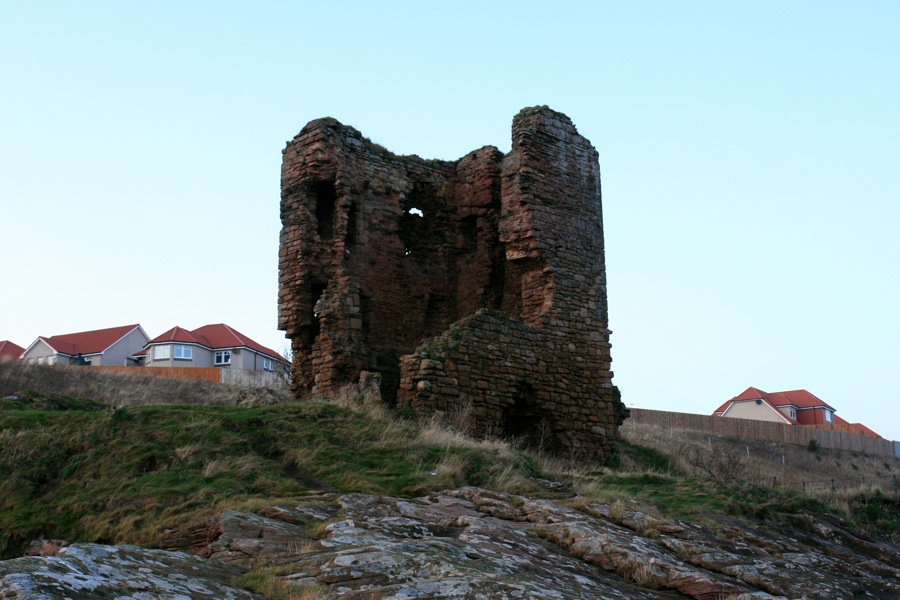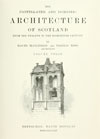

Seafield Tower is a ruined 16th century tower house, standing on rocky ground close to the sea, with a natural harbour formed by the rocks below.

The tower is four storeys in height, with a vaulted basement level. It measures around 9.4m by 7.8m at the base, with walls some 1.7m thick. The main entrance seems to have been at ground level in the east wall.

Access to the upper levels was via a spiral staircase enclosed in a small projecting tower at the south-east corner, measuring around 5.9m by 3.8m. However most of the south-east corner, above first floor level at least, has now fallen.

The size and shape of the main chimney, which runs from the first floor all the way up the north wall, suggests that the main hall was located on the first floor above the vaulted basement.

At second floor level the west wall is largely intact, with corbels, a doorway and a small chimney still visible.

Seafield Tower was surrounded by an irregularly-shaped courtyard wall which stretched down to the sea. To the north-west of the castle, on the outside of the courtyard wall, was a round tower known as the Devil’s Tower. Only a small section of the courtyard wall can still be seen, close to the castle’s north wall.
For many years it was owned by the Moultray, or Moutray, family, but when the last Moultray of Seafield was killed during the Jacobite Rising of 1715, Seafield Tower passed to the Earl of Melville.
Later it is thought the castle was used as a base by smugglers, and the harbour was used up until the 19th century.










